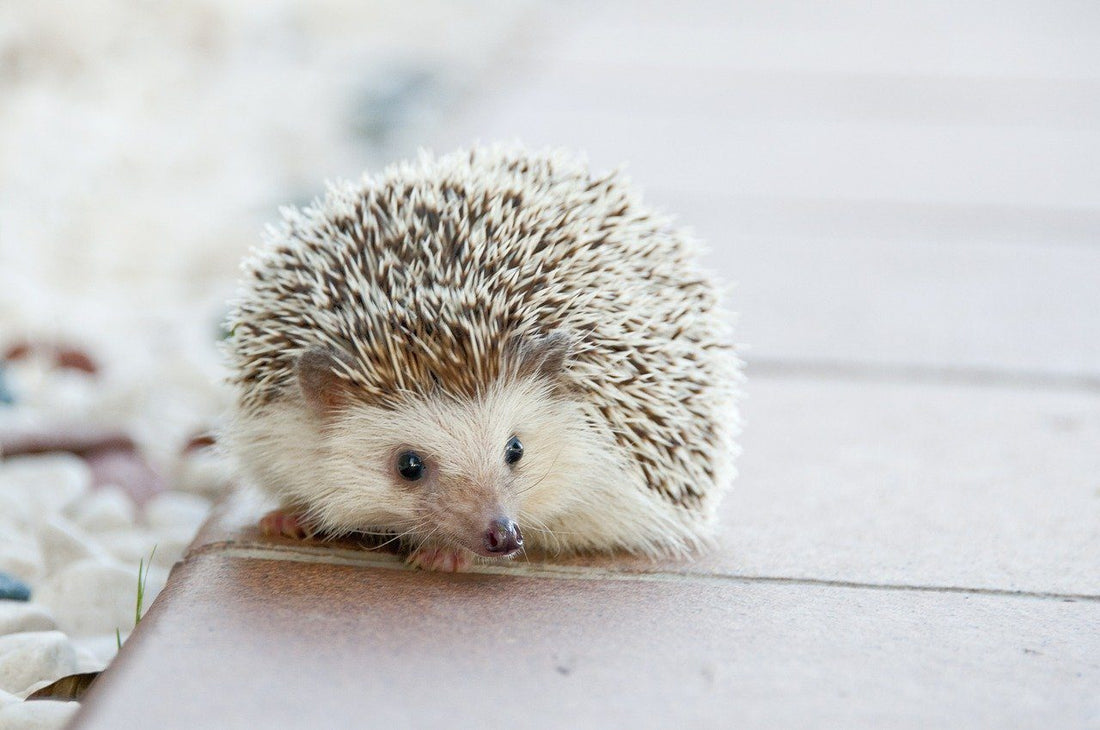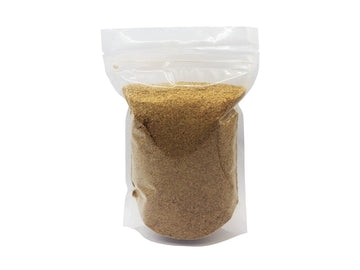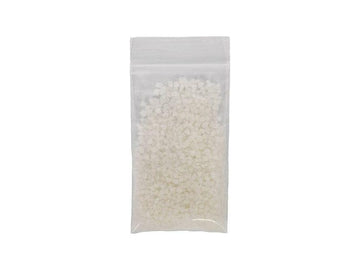Hedgehogs are a group of 6-8” long, terrestrial, nocturnal mammals native to parts of Europe, Asia, and Africa. Preferred habitat varies depending on species, so they can be found in a variety of environments, including savanna, forest, desert, scrubland, and even suburban areas. The most common hedgehog species in the pet trade are the four-toed hedgehog hedgehog (Atelerix albivetris), the long-eared hedgehog (Hemiechinus auritus), and the Indian long-eared hedgehog (Hemiechinus collaris). Hybrids between A. albiventris and A. algirus (known as the African pygmy hedgehog) are also popular.
Generally speaking, hedgehogs can be recognized by their long, pointed snouts, dark eyes, short legs, small feet, and the plentiful sharp spines that cover most of the top half of their body. These spines are used as a deterrent when they curl up into a ball. Hedgehogs can be found in a variety of colors, including cream, tan, brown, black, and/or gray.
As exotic pets, hedgehogs are more demanding to house and care for compared to other popular small pet mammals such as rats, hamsters, gerbils, etc. So it’s important to know what you’re getting into, and whether they’re even legal where you live. When well cared for, hedgehogs can live up to 8-10 years.
Minimum enclosure size for hedgehogs
The absolute minimum enclosure size for a hedgehog is 48”L x 24”W, or 8 square feet of floor space. The walls should be tall and small enough to discourage climbing and possible escape. Of course, more floor space is always better if you can manage it! Offering more space means you can provide a more varied landscape and more room for your hedgie to explore and exercise.
Cohabitation (keeping multiple hedgehogs in one enclosure) is not recommended.
Do hedgehogs need UVB?
Hedgehogs are nocturnal mammals, which means they are able to survive without regular UVB exposure. However, we still recommend providing appropriate UVB lighting as part of the setup. UVB lighting helps provide a clear day/night cycle, provides all of the vitamin D that your pet needs, strengthens the immune system, facilitates better digestion, and provides other benefits.
The best UVB bulbs for hedgehogs are:
- Zoo Med T8 Reptisun 5.0
- Arcadia ShadeDweller
For best results, house the UVB bulbs in a reflective fixture and position the lamp on one side of the enclosure. It should be about 8-13” above the hedgehog’s back for best results.
UVB is blocked by glass and plastic, so placing the terrarium in front of a window doesn’t count as “free UVB” — in fact it can make your terrarium too hot due to the greenhouse effect. Don’t forget to replace your bulb every 12 months!
Lights should be on for 12 hours/day.
Best temperature for hedgehogs
Although mammals are endotherms, which means they’re not as dependent on thermal gradients as ectotherms like reptiles, it’s still important to make sure your hedgehog has access to the right temperatures to stay comfortable.
Air temperature in a hedgehog enclosure should be between 75-80°F. Make sure you’re maintaining appropriate temperatures with a digital probe thermometer.
If you don’t have a room in your home that is naturally this warm, you will need to provide artificial heating. Ceramic heat emitters connected to a thermostat work well for this purpose.
Best humidity levels for hedgehogs
Humidity isn’t terribly important for keeping hedgehogs, but if the room humidity is 30% or lower, there’s a good chance your hedgehog will become uncomfortable and itchy. Setting up a humidifier to boost humidity in that room to 40-60% will make things much more comfortable for both of you!
Best bedding for hedgehogs
Providing a thick layer of bedding makes the enclosure more comfortable and provides burrowing material. We recommend the following substrates for hedgehogs:
- aspen shavings
- shredded paper
- Carefresh
- fleece
Substrate should be at least 3” deep and partially replaced or washed once a week. Clean the enclosure with odorless products, as hedgehogs have very sensitive noses!
In some cases, hedgehogs can be litterbox trained to make cleanup easier.
How to decorate a hedgehog enclosure
A bare-bones enclosure makes for a bored hedgehog, reducing its quality of life. Keep your pet entertained and engaged with its environment with the strategic use of décor items that encourage it to exercise natural behaviors!
Décor options for hedgehogs include:
- 11-12” exercise wheel (no wire!)
- hiding places
- tubing/tunnels
- pipes
- ramps
- Ledges
Toys like balls, bells, and chewables also make great additions.
What to feed to a hedgehog
Hedgehogs are omnivorous, which means that they need to eat both plants and meat/insects in order to get the right nutrition. Specifically, their diet must be high in protein (>30%) and low in fat (<10%). Hedgehogs should get roughly ¼ cup of food daily, but adjust this amount based on your individual hedgehog’s body condition.
Main diet options for hedgehogs:
- dry/wet cat food (no fish flavors)
- commercial hedgehog diet
Fruits and vegetables, as well as insects, can be offered as treats and to add variety to your pet’s diet. Here are some options to consider:
Water
A small, shallow water bowl or water bottle should be available at all times so your hedgehog can stay well hydrated. Check with the hedgehog’s breeder to make sure your hedgehog is water bottle-trained before installing a water bottle. Keep the water clean at all times, and scrub with animal-safe disinfectant once a week.
How to handle your hedgehog
With gentleness, patience, and persistence from your end, hedgehogs can be quite tame, personable pets. Here are some basic rules for handling hedgehogs:
- Wait at least 2 weeks before attempting to handle your new hedgehog.
- Handle in the evening or at night, when your hedgehog is naturally active.
- Never move quickly or otherwise startle your hedgehog.
- Wash your hands first so your fingers don’t smell potentially like food.
- If the hedgehog bites, don’t put it back immediately — this actually encourages biting behavior.
One fun way to bond with your hedgehog is by hand-feeding with soft-tipped feeding tongs!
*This care sheet contains only very basic information. Although it’s a good introduction, please further your research with high-quality sources. The more you know, the better you will be able to care for your pet!
Image by Amaya Eguizábal from Pixabay











